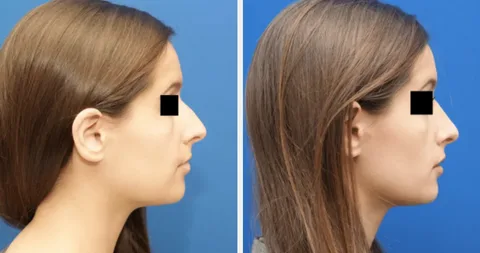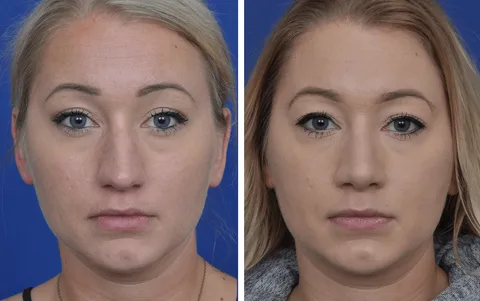Will Insurance Cover a Nose Job?
Introduction
Rhinoplasty, commonly known as a nose job, is a popular cosmetic procedure that can significantly enhance one’s appearance and boost self-confidence. However, the cost of this surgery can be a major concern for many. One of the most frequently asked questions is whether insurance will cover the cost of a nose job. In this comprehensive article, we will delve into the details of insurance coverage for rhinoplasty, including the factors that determine coverage, the process of getting insurance approval, and alternative financing options. We’ll also sprinkle in some humor and light-heartedness to keep things engaging!

Understanding Rhinoplasty
Rhinoplasty is a surgical procedure that involves reshaping or reconstructing the nose. People opt for nose jobs for various reasons, including improving the appearance of the nose, correcting birth defects, repairing nasal injuries, or addressing breathing difficulties. There are two main types of rhinoplasty: cosmetic and functional.
- Cosmetic Rhinoplasty: This type of rhinoplasty is performed solely for aesthetic purposes, such as altering the size, shape, or symmetry of the nose to enhance facial harmony.
- Functional Rhinoplasty: This type of rhinoplasty focuses on improving breathing and correcting structural abnormalities that may hinder proper airflow.
Insurance Coverage for Rhinoplasty
Insurance coverage for rhinoplasty can vary depending on several factors, including your insurance provider, the type of plan you have, and the reason for the procedure. In general, insurance providers are more likely to cover functional nose jobs that are deemed medically necessary rather than cosmetic procedures1.
Determining Medical Necessity
To get your nose job covered by insurance, you must prove that the procedure is medically necessary. This typically involves demonstrating that you have functional problems that have not responded to more conservative treatments. Common medical reasons for rhinoplasty include:
- Nasal Fracture: A broken nose that affects breathing.
- Deviated Septum: A condition where the nasal septum is displaced, causing breathing difficulties.
- Cleft Palate or Cleft Lip: Congenital conditions that affect the structure of the nose.
- Polyps: Noncancerous growths in the nasal passages that obstruct airflow.
- Chronic Nasal or Sinus Inflammation: Persistent inflammation that affects breathing.
- Misshapen Cartilage: Structural abnormalities that hinder proper airflow1.

Finding an In-Network Provider
Once you have determined that your rhinoplasty is medically necessary, the next step is to find an in-network provider. Insurance companies often have a list of approved providers who are covered under your plan. Choosing an in-network provider can help reduce out-of-pocket expenses and ensure that you receive the maximum benefits from your insurance coverage2.
Preparing for the Insurance Claims Process
Before undergoing rhinoplasty, it’s essential to prepare for the insurance claims process. This involves gathering all necessary documentation, including medical records, doctor’s notes, and any other evidence that supports the medical necessity of the procedure. Your surgeon will also need to provide a pre-authorization letter to your insurance company, detailing the reasons for the surgery and the expected benefits1.
Submitting the Insurance Claim
Once you have all the necessary documentation, you can submit your insurance claim. This process can be time-consuming and may require multiple follow-ups with your insurance provider. It’s important to stay organized and keep track of all communications with your insurance company to ensure a smooth claims process2.
Appealing a Denied Claim
If your insurance claim is denied, don’t lose hope! You have the right to appeal the decision. This involves providing additional documentation and evidence to support your case. Your surgeon can also help by writing a detailed letter explaining the medical necessity of the procedure. Persistence is key, and many patients have successfully appealed denied claims with the right approach2.
Alternative Financing Options
If your insurance does not cover the cost of your rhinoplasty, there are alternative financing options available. Many plastic surgery clinics offer payment plans or financing options to help make the procedure more affordable. Additionally, some healthcare credit cards can be used to cover the cost of cosmetic procedures3.

Conclusion
In conclusion, getting insurance to cover a nose job can be challenging, but it’s not impossible. By understanding the factors that determine coverage, preparing for the insurance claims process, and exploring alternative financing options, you can increase your chances of getting the procedure covered. Remember to stay persistent and keep a sense of humor throughout the process. After all, a little laughter can go a long way in making the journey more enjoyable!
External Links for Further Reading
- Bupa UK: Nose Reshaping (Rhinoplasty)
- Feel Beautiful: How to Get Rhinoplasty Covered by Insurance
- LiveWell: How To Get A Nose Job Covered By Insurance
- RealSelf News: When Does Insurance Cover Cosmetic Surgery?
- CareCredit: How Much Does a Nose Job Cost?
I hope this article helps you navigate the complex world of insurance coverage for rhinoplasty. If you have any further questions or need additional information, feel free to reach out. Good luck on your journey to a better nose and improved breathing! 😄
1: Feel Beautiful: How to Get Rhinoplasty Covered by Insurance 2: LiveWell: How To Get A Nose Job Covered By Insurance 3: CareCredit: How Much Does a Nose Job Cost?
Leave a Reply